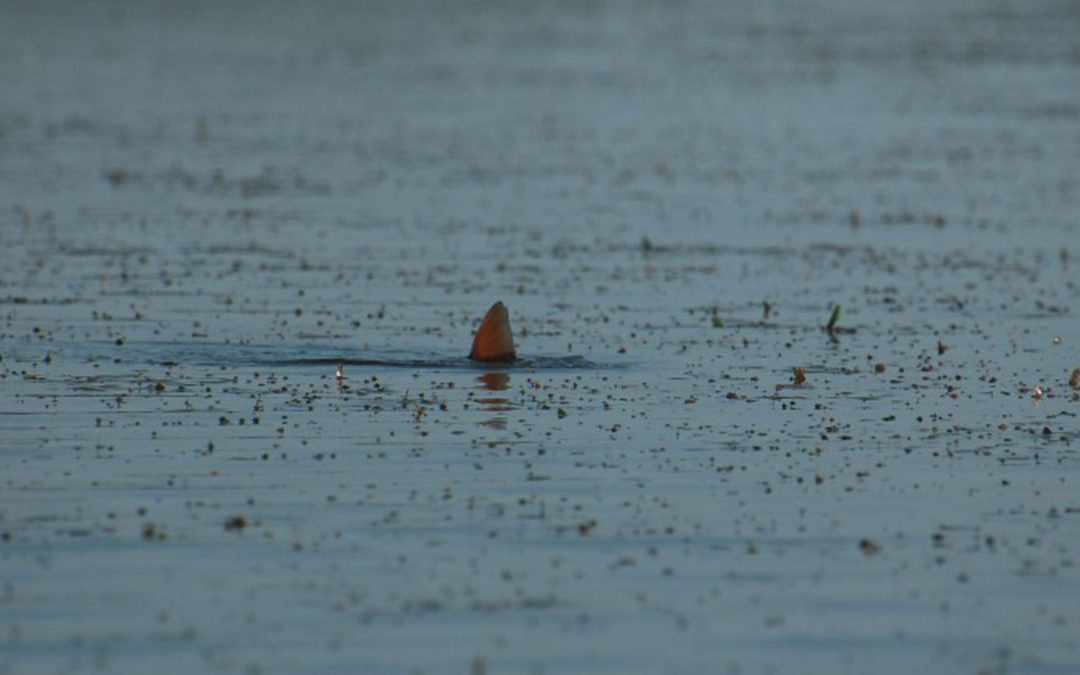As we enter the height or what could be considered this winter’s midlife, the conditions or elements we face won’t differ all that much from last month. That being wind and low tides. However, we can take advantage of these tides by getting set up when they’re low and then working the incoming. More specifically, the beginning of the incoming. In fact, this time of year between the improved visibility at this point and the aggressive nature of a hungry fish the sight fishing possibilities are unique.
For the most part, because they’re tolerant to cold conditions I’ll concentrate on redfish. In many cases, there’s a good chance they’ll be on the small side, rat sized redfish. This is due in part because I’ll most likely find myself as far back in creek systems as I can get looking for dead end coves covered with sand bottom. That being said, I’ve seen more big redfish back in these systems lately than in years past. I’m hoping that’s a result of the closed seasons and a sign of things to come.
After a couple cool months, this is a natural transition area for many of our game fish as they’ll move up into these areas to warm up as the sun heats the shallow sandy bottom. This includes sheepshead, spotted sea trout, and snook. Multiple months of cool weather is also why I also like the early incoming tide. Bait has been scarce for long enough that redfish will begin looking with some urgency. They feel the tide instantly and begin working up the creek or flat rushing to get a shot at what was unobtainable on low water. The low tide has left the bottom terrain dry. Crabs and other crustaceans come out of hiding to feed. The fish know their chances are best early before the prey has a chance to vanish. Moreover, they’re confident and more vulnerable competing for food as they move in with the incoming. Too, I’ll downsize my baits and go with crab and clouser patterns.
Out on the grass flats, spotted sea trout will be abundant. In two to four feet off the intracoastal from Lemon Bay to Pine Island Sound should fish well. They’ll eat a fly as well as any soft plastic and of course, live shrimp rigged with a popping cork.
In the harbor, pompano can be found on the hard bottom just off Cape Haze Point. Also, keep an eye on your boat wake as you’re running outside the bar along the west wall. A ¼ ounce Nylure Bomber pompano jig is all you need. Sheepshead are everywhere and can be fished from land as well as the boat. The Placida trestle can be fished from both land and boat and the Boca Grande trestle is a popular spot by boat. Every dock, pier, underwater structure, and artificial reef will hold sheepshead. A fiddler crab or piece of shrimp is your best bet.


Recent Comments